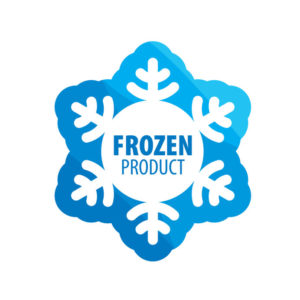
Convenient and delicious, frozen food has become a go-to choice for time-strapped individuals who crave a home-cooked meal. From frozen pizza and chicken nuggets to vegetables, these frozen delights have solidified their place as a household staple.
However, the importance of product labeling cannot be overstated when it comes to frozen food. It plays a vital role in enabling consumers to make informed decisions while helping businesses comply with regulations and steer clear of legal complications.
In this blog post, we will delve into the common challenges faced by businesses that deal with frozen foods, especially meat products, with a focus on labeling, along with practical solutions.
The Food and Drug Administration (FDA) has established specific requirements for frozen food labeling. These requirements encompass:
- Product name
- Net weight or volume
- Nutritional facts
- Ingredients list
- Directions for use (if applicable)
- Storage instructions
- Allergen information
Ensuring strict compliance with FDA labeling requirements is crucial. By adhering to these guidelines, businesses can avoid legal complications and foster trust among their customer base.
Frozen food packaging often encounters extreme temperatures, which can lead to label peeling or detachment. Inadequately adhered product labels not only create confusion about the product’s identity and nutritional information but also contribute to an unprofessional appearance and decreased shelf appeal.
The use of high-quality label materials with strong adhesives can resolve this issue effectively. Primeflex offers a diverse range of label materials explicitly designed to withstand extreme temperatures, ensuring that product labels remain intact throughout the freezing process.
While including all necessary information on frozen food product labels is crucial, it is equally important to avoid overwhelming consumers with excessive details. An overcrowded label may appear cluttered and impede readability.
To address this concern, utilize clear and concise language and consider incorporating symbols or icons to convey information. Employing high-quality printing techniques can enhance the professional appearance and legibility of the label.
In a competitive market, it is essential to make frozen food products stand out from the competition. One effective approach is to create creative and distinctive product labels.
By incorporating eye-catching colors, bold fonts, and compelling graphics, businesses can differentiate their products on store shelves. Additionally, sharing information about the quality of ingredients or the brand’s story can help foster a loyal customer base.
Compliance with FDA regulations, utilization of high-quality label materials, avoidance of information overload, and product differentiation are key elements for creating a successful and trusted brand. Primeflex stands ready to assist with all labeling needs, providing superior label materials and expert guidance to help businesses make a remarkable impact in the market.
